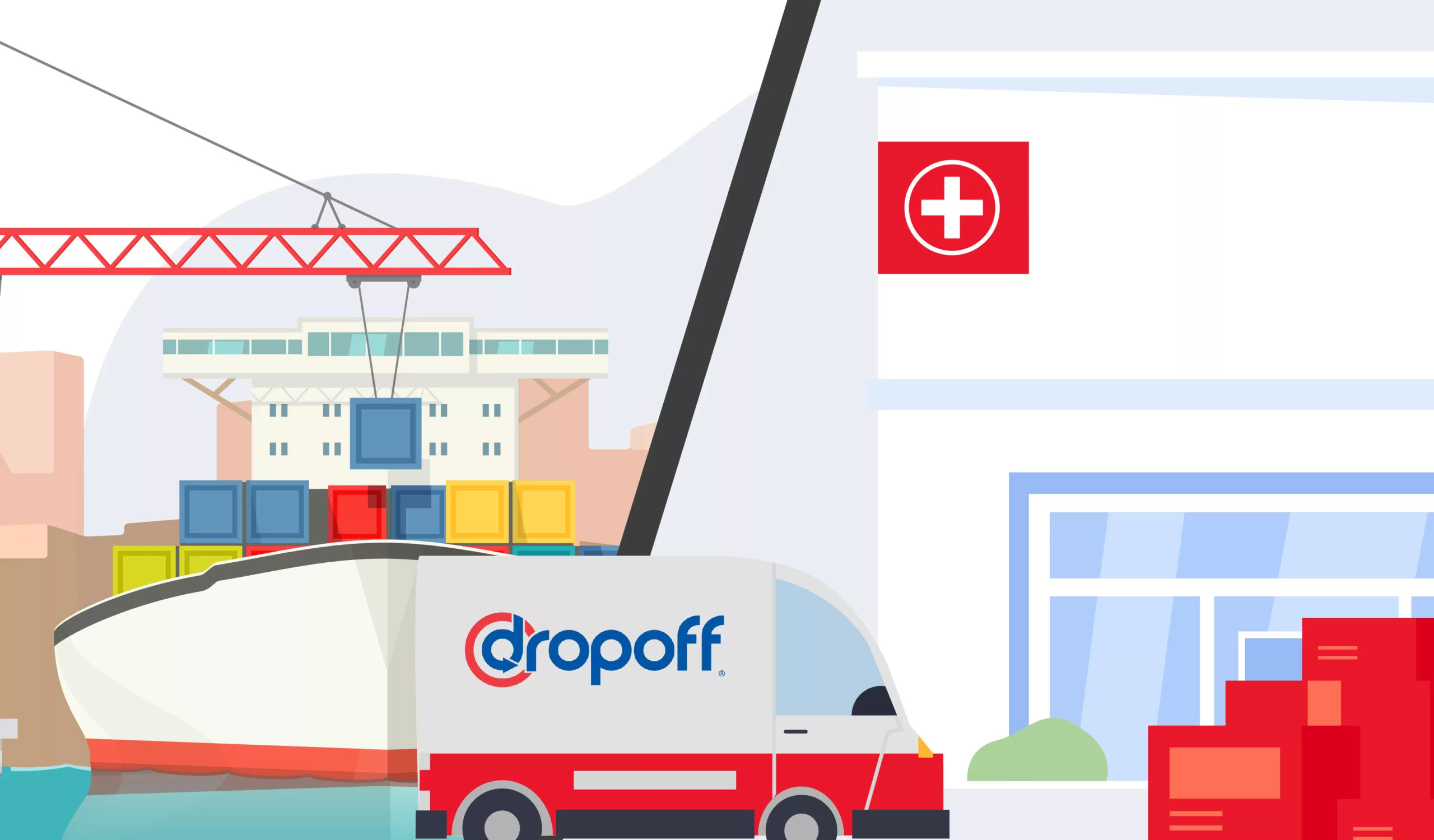Sustainable Shipping – 5 Key Reasons To Start It In Your Business

As our world grapples with pressing environmental challenges, businesses face mounting pressure to adopt sustainable practices across all operations. A recent NielsenIQ study found that 78% of US consumers consider upholding a sustainable lifestyle essential, particularly in terms of their commercial consumption.
Given this reality, sustainable shipping has become increasingly vital for businesses across numerous industries. If you’re among the business owners still uncertain about implementing sustainable deliveries, this article is for you.
Shipping and Environment: The Unlikely Connection
Shipping has a profound and multifaceted impact on the environment, affecting air and water quality, and marine life, and even contributing to climate change.
a. Air Pollution
Ships emit more than 18%of certain air pollutants, contributing significantly to atmospheric pollution. Despite being perceived as relatively low compared to other transport methods, the sheer volume of shipping activity globally makes its emissions substantial.
b. Water Pollution and Marine Life
Ballast water discharge introduces non-native and invasive species to ecosystems, causing ecological and economic harm. Ships generate noise pollution that disrupts marine species’ communication, navigation, and feeding patterns, impacting their survival.
c. Atmospheric Pollution
Diesel engines used in ships burn high sulfur content fuel oil, producing pollutants like sulfur dioxide and nitrogen oxide, contributing to air quality issues and health problems.
Greenhouse gas emissions from shipping, primarily carbon dioxide, contribute to climate change, with the industry responsible for a significant share of global emissions.
d. Climate Change
Shipping activities contribute to climate change through greenhouse gas emissions, primarily carbon dioxide. The industry’s emissions are expected to increase substantially without intervention, exacerbating global warming and its impacts.
Addressing environmental impacts requires concerted efforts, including regulatory measures, technological innovations, and industry collaboration. Initiatives such as sulfur regulations, emission reduction targets, and the development of cleaner fuels are essential to mitigate the adverse effects of shipping on the environment.

5 Key Reasons to Start Sustainable Shipping
Implementing sustainable shipping goes beyond caring for the environment; it has become a necessity in almost all industries. Here’s why sustainability in shipping should be a priority for all businesses:
1. Future-proofing your business
Both large companies and SMEs are racing to implement sustainability within their operations. For instance, in 2022, Microsoft joined the tech race for shipping sustainability by collaborating with Hitachi and NVIDIA on big data technology development.
Additionally, companies like Maersk, Samskip, and DFDS have showcased the benefits of embracing green technologies, investing in alternative fuels, and adopting energy-efficient designs, which not only reduce emissions but also enhance their bottom lines.
Embracing sustainable shipping practices ensures your business is prepared for evolving regulations and shifting consumer preferences. Failure to adapt to these changes risks leaving companies behind in a rapidly changing marketplace.
2. Cost savings in disguise
Contrary to popular belief, sustainable shipping can yield significant cost savings. Sustainable shipping packaging, for instance, can reduce packaging costs by up to 20%. By switching to sustainable materials and practices, companies can notably decrease packaging expenses compared to traditional methods. These materials are often lighter, reducing shipping costs for heavier materials.
Furthermore, route optimization can help businesses reduce fuel costs by up to 30%, leading to a potential profit growth of at least $380K+. There’s no denying that by optimizing packaging, minimizing waste, and streamlining logistics operations, businesses can lower shipping costs and enhance efficiency.
3. Elevate your brand image
Consumer attitudes are shifting towards sustainability, with studies showing that 66% of all respondents and 75% of millennials consider sustainability when making purchasing decisions.
Additionally, 81% of global consumers believe that companies should contribute to environmental improvement. With consumers demanding sustainable products and services, prioritizing sustainable shipping showcases your commitment to environmental stewardship.
By embracing sustainable practices, you enhance your brand image and appeal to eco-conscious customers, setting your business apart in a competitive marketplace.
4. Outshine your competitors
Sustainable businesses have a clear advantage over competitors still relying on traditional operations.
Consumer preferences are shifting, with two-thirds expressing willingness to pay more for sustainable products, with premiums averaging as high as 12% for minimized environmental impact.
Additionally, governments worldwide are incentivizing sustainable practices, offering tax exemptions and other benefits. For instance, the Green Ship Incentive Program in Long Beach, USA, has not only improved air quality but also provided financial incentives to shipping lines using environmentally friendly vessels, totaling over $1.7 million in payouts in 2020. In today’s competitive landscape, differentiation is crucial.
Embracing sustainable shipping not only distinguishes your business but also provides a unique selling point that resonates with environmentally conscious consumers, giving you a significant edge over your competitors.
5. Make an impact
Sustainable shipping goes beyond reducing environmental impact; it also enables businesses to make a tangible difference in their communities. By prioritizing sustainability in shipping operations, businesses contribute to cleaner air and waterways, ultimately improving public health and quality of life for local residents.
For example, initiatives such as using alternative fuels, optimizing routes, and reducing packaging waste not only lower carbon emissions but also alleviate traffic congestion and noise pollution, creating a more pleasant and sustainable urban environment.
Moreover, sustainable shipping practices often extend beyond the business realm, fostering partnerships and collaborations with local governments, NGOs, and community organizations. By actively engaging with stakeholders and investing in eco-friendly initiatives, businesses can address broader societal challenges, such as climate change adaptation and resilience.

Key Metrics to Measure If Your Shipping Is Sustainable Enough
Key metrics to gauge the sustainability of shipping operations serve as vital indicators for businesses striving to minimize their environmental footprint while maximizing efficiency. These metrics include:
a. Carbon Emissions
A recent study unveiled significant disparities in carbon emissions across various truck subgroups, ranging from urban delivery trucks emitting over five times more CO2 per ton-kilometer compared to long-haul tractor-trailers. This variation underscores the importance of precisely measuring and managing carbon emissions in shipping operations. The European Parliament’s mandate to slash CO2 emissions from new heavy-duty vehicles by 90% by 2040 further emphasizes the urgency of reducing carbon footprints in the transportation sector.
Tracking carbon emissions enables businesses to gauge their environmental impact and take proactive steps to minimize it. By optimizing routes, enhancing fuel efficiency, and adopting cleaner technologies, companies can mitigate climate change effects while aligning with regulatory requirements and meeting consumer expectations for eco-friendly practices.
b. Fuel efficiency
Fuel efficiency metrics quantify the amount of fuel consumed per unit of distance traveled or cargo transported. Typically, larger trucks with heavier payloads consume more fuel, averaging around 30 to 40 liters of diesel every 62 miles, while smaller vehicles with lighter loads consume less, such as approximately 25 liters per 62 miles for a small truck carrying around 16 tonnes.
Fortunately, advancements in technology have led to the production of more fuel-efficient last-mile delivery trucks by leading brands. For instance, the Ford Transit Connect boasts a combined fuel economy of 25.5 MPG, followed by the Nissan NV200 with 25 MPG, and the RAM Promaster City with 24 MPG.
Enhancing fuel efficiency, especially for last-mile deliveries, is paramount for businesses as it not only reduces operating costs but also minimizes emissions and decreases reliance on fossil fuels. Strategies to improve fuel efficiency include route optimization, fleet modernization, and the adoption of alternative fuels for propulsion technologies. By prioritizing fuel efficiency, companies contribute to a more sustainable shipping industry while simultaneously bolstering their bottom line.
c. Energy consumption
On average, a delivery truck consumes 1,800 gallons of gas annually, with a significant portion wasted due to idling. According to a recent survey by the Office of Energy Efficiency, 39% of fleet vehicles idle for three to four hours daily, while another 14% idle for over four hours daily.
Transitioning to electric vehicles (EVs) presents a promising solution for achieving a more energy-efficient supply chain. Electrifying last-mile deliveries has gained traction within the logistics industry, with recent surveys suggesting that the EV market for last-mile delivery will grow at a nearly 16% compound annual growth rate (CAGR) between 2023 and 2028. Aside from this, other last-mile optimizations such as deploying drones and autonomous vehicles are being considered by numerous companies.
Monitoring overall energy consumption involves tracking electricity usage, fuel consumption, and other energy sources utilized in shipping operations. By analyzing energy consumption patterns, businesses can identify inefficiencies and implement strategies to reduce energy usage and associated costs. This includes optimizing equipment and machinery, adopting energy-efficient technologies, and implementing energy management systems to promote sustainable energy practices.
d. Waste Generation
While it may seem like the online shopping industry is a more sustainable option for consumers, it’s far from the truth. In fact, online shopping generates 4.8x more packaging waste than offline shopping and could contribute an additional 10% to total waste over the next decade.
Minimizing waste generation is essential for reducing environmental pollution and promoting circular economy principles. Businesses can implement waste reduction strategies such as packaging optimization, recycling programs, and waste-to-energy initiatives to minimize waste generation and enhance sustainability.
Encouragingly, a February 2024 survey suggests that 59% of companies have begun using more sustainable materials, such as recycled materials and lower-emitting products, indicating a positive shift towards more environmentally friendly practices.
e. Environmental compliance
It’s crucial for businesses engaged in shipping to ensure compliance with environmental regulations and standards, especially in states with aggressive green laws like Vermont, New York, Massachusetts, Maryland, and California. This includes adhering to emissions limits, waste disposal regulations, and ballast water management requirements.
Proactively complying with environmental regulations not only demonstrates a commitment to environmental responsibility but also helps minimize the risk of regulatory penalties or reputational damage. Moreover, maintaining environmental compliance fosters trust with stakeholders and reinforces the organization’s commitment to sustainability.

Prevent the Nightmare: A World Without Sustainable Shipping
If sustainable shipping practices are not upheld, the consequences for the world could be dire. Unfortunately, we don’t even have to imagine, as the United States Environmental Protection Agency (EPA) has already painted a vivid and scary picture for us.
Increased carbon emissions from shipping activities contribute to global warming, leading to a warmer atmosphere, rising sea levels, and changes in precipitation patterns. These changes not only affect the environment but also impact food supplies, water resources, infrastructure, ecosystems, and human health. Without sustainable shipping practices, greenhouse gas concentrations will continue to rise, intensifying climate change and its associated risks.
Additionally, unruly waste disposal and fuel-inefficient trucks exacerbate environmental degradation. Increased waste generation from inefficient shipping practices contributes to pollution and threatens ecosystems. Upholding sustainable shipping practices is therefore essential to mitigate these risks and ensure a healthier, more sustainable future for our planet.

Dropoff: Your Ultimate Partner in Cost-Efficient and Future-Proof Sustainable Shipping
At Dropoff, we’re more than just a delivery service – we’re your ultimate partner for sustainable shipping. With a firm commitment to environmental responsibility, we offer innovative solutions that help businesses reduce their carbon footprint while maintaining efficiency and reliability. From eco-friendly packaging options to optimized delivery routes and carbon offset programs, we empower businesses to achieve their sustainability goals without sacrificing quality.
Our industry-leading same-day delivery services, trusted by over 270 global brands, ensure that packages are delivered safely, swiftly, and reliably, with real-time tracking and image confirmations for full visibility and control. With tailored logistics software and guaranteed on-time delivery, backed by our dedication to excellence, Dropoff is the ideal partner for businesses looking to embrace sustainability in their shipping practices.
No matter the industry – healthcare, retail, or industrial – Dropoff specializes in supply chain optimization with a cost-effective approach. By partnering with Dropoff, businesses can focus on their core operations, confident that their deliveries are in good hands. Join us in shaping a sustainable future, one shipment at a time.
FAQs
Sustainable shipping involves reducing environmental impact in transportation, minimizing emissions, and optimizing resource use.
To ship items sustainably, it’s essential to prioritize eco-friendly practices throughout the entire shipping process. Start by choosing packaging materials that are recyclable, biodegradable, or made from sustainable sources. Additionally, consider using packaging that is lightweight and compact to minimize the use of resources and reduce transportation emissions.
Shipping materials sustainably involves choosing recyclable or biodegradable packaging, optimizing packaging size, and selecting efficient transportation routes.
Shipping products sustainably entails using eco-friendly packaging materials, reducing carbon emissions during transportation, and implementing efficient logistics practices.






